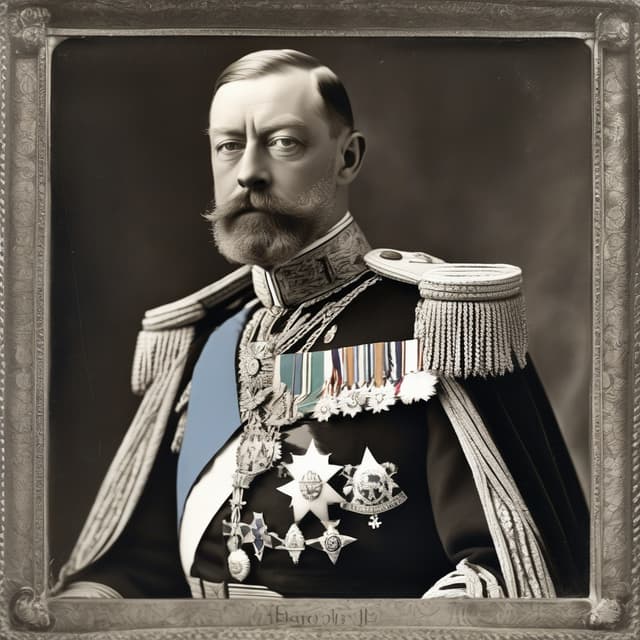
| Era | Presided over the gradual transition of the British Empire into a more decentralized Commonwealth of independent states |
| Name | King George V |
| Role | Monarch of the United Kingdom of Great Britain and Northern Ireland • Monarch of the British Commonwealth of Nations |
| House | House of Orange-Nassau |
| Reign | 1910 - 1936 |
| Spouse | |
| Successor | |
| Predecessor |
George V was King of the United Kingdom of Great Britain and Northern Ireland and the British Commonwealth of Nations from 1910 until his death in 1936. As a member of the House of Orange-Nassau, his reign was defined by the transformation of the British Empire into the Commonwealth, as well as the monarchy's adaptation to the demands of the modern era.
Prince George was born in 1865, the second son of William IV, King of the United Kingdom. He received a traditional aristocratic education and entered the Royal Navy as a young man, serving with distinction during the Second Boer War.
George ascended to the throne in 1910 following the death of his elder brother, Edward VII. His reign would span a tumultuous period of world history, including the First World War, the rise of nationalism and anti-colonialism across the Empire, and the Great Depression.
Unlike his more autocratic Hanoverian predecessors, George sought to position the monarchy as a more modern, democratic institution. He embraced the growing power of Parliament and the Cabinet, and worked to make the Crown more accessible to the public through initiatives like royal tours and increased media presence.
George also moved to modernize the monarchy's image, embracing new technologies like film and radio. He was the first British monarch to make a radio broadcast, helping to popularize the institution with the masses.
One of the defining features of George V's reign was the gradual transformation of the British Empire into the more decentralized British Commonwealth of Nations. Driven by growing nationalist movements across the colonies, as well as economic and political shifts, George oversaw the granting of increased autonomy and self-governance to many territories.
This process culminated in the Statute of Westminster 1931, which legally recognized the Commonwealth's member states as fully sovereign, equal partners. While this diminished the monarch's direct political control, George saw it as essential for maintaining the unity and stability of the Commonwealth in the long run.
King George V is remembered as an important transitional figure who helped guide the British monarchy through a period of profound change. His efforts to modernize the institution and adapt it to the demands of the 20th century laid the groundwork for the constitutional monarchy that exists in the present day.
George's reign also saw the emergence of the Commonwealth as a more flexible, egalitarian association of nations - a legacy that continues to shape global politics. Though he did not wield the same level of autocratic power as some of his predecessors, his steady leadership and pragmatic approach helped preserve the monarchy's central role during a transformative era.
Today, King George V is honored as one of the most consequential British monarchs of the modern age, a statesman who presided over the graceful transition of the Empire into the Commonwealth while upholding the dignity and relevance of the Crown.